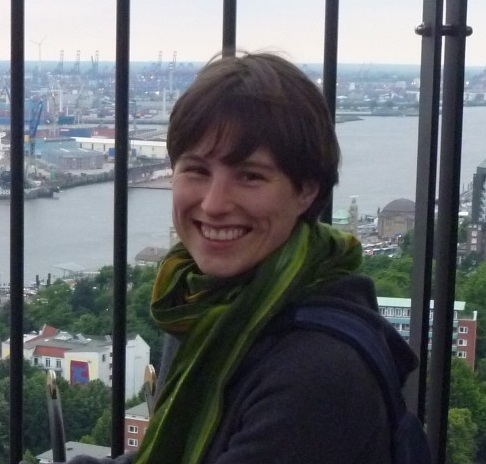Each summer Social Studies @ CSU features an “In the Classroom” series highlighting different strategies to connect Social Studies content with pedagogy. In 2013 the Mapwalk Journeys series focused on Professor Stephen Cory’s Mapwalk activity and fostering geographic literacy in the classroom. The 2014 series Connecting Historical Thinking and Technology addressed the challenges of using classroom technology as a meaningful tool to teach historical thinking. As I brainstormed a topic for the 2015 summer series I kept returning to the growing collection of oral histories in the Cleveland Regional Oral History Collection (CROHC).
Since I began teaching at CSU in 2011 I have been aware that my colleague Mark Souther and others work regularly with CSU students to create and disseminate oral history interviews through public history courses and the Center for Public History + Digital Humanities (CPHDH). I first learned of the scope of the oral history collection recently though in my role as advisory member for CPHDH. While the center has made exciting and innovative efforts to make these interviews accessible through their mobile app Cleveland Historical and Cleveland Voices site, all too often cutting edge research like this remains undiscovered by K-12 educators who are pressed for time and feel bound by state and national standards.
The History Speaks project addresses this gap between digital collections and K-12 pedagogy. My preliminary research on oral history in education revealed valuable sources on teaching students the mechanics of conducting oral history interviews, such as the Oral History Association’s Classroom Guide, but few resources addressed the use and editing of oral history interviews for practical classroom applications.
I approached History Speaks project co-Director Mark Souther about using CROHC content for an oral history pedagogy project aimed at assembling a collection of oral history clips specifically for use in the K-12 classroom. His enthusiastic support confirmed the value of the project and History Speaks was born! With support from the CSU Office of Research we were able to hire two outstanding undergraduate researchers, Victoria McDonough and Christopher Morris.
You can read the full details of our project in the white paper. Here I want to point to the strengths of our collection for K-12 teachers:
- 60-90 Second Clips: Each clip is under two minutes long, allowing teachers to assign multiple clips for homework in a flipped class approach or use them in the classroom for set induction or other historical thinking exercises.
- Discoverability: The History Speaks site features clear titles for all clips, categories linked to commonly taught Social Studies subject areas nationwide and thematic tags such as “Civil Rights” linking to similar interviews.
- Direct links to ODE Content Standards: Tori and Chris have linked each clip to at least two Ohio Department of Education Social Studies Content statements. This saves Ohio teachers time and makes clips discoverable even in searches for ODE content standards.
- Classroom Applications: For teachers browsing content or looking for model lesson plans each clip has a list of potential classroom applications. In addition Chris and Tori posted model lesson plans on the Social Studies @ CSU site using a selection of the oral history clips they created.
- Oral History Methods: Tori and Chris also blogged about the use of oral history methods to teach historical thinking. Chris posted an overview of scholarship on oral history pedagogy and a tutorial for creating oral history clips with Audacity. Tori interviewed project co-director Mark Souther to showcase the perspective of an educator who has both researched and collected oral histories and used them in various ways in his classroom.
Over the course of the summer we developed best practices for making oral history sources discoverable and practical for classroom use. Check back for updates as we add to the History Speaks collection and develop future student- and teacher-created content using the CROHC and other digital oral history resources. Suggestions for our future projects? Join the conversation here or on Twitter @SocStudiesatCSU!

